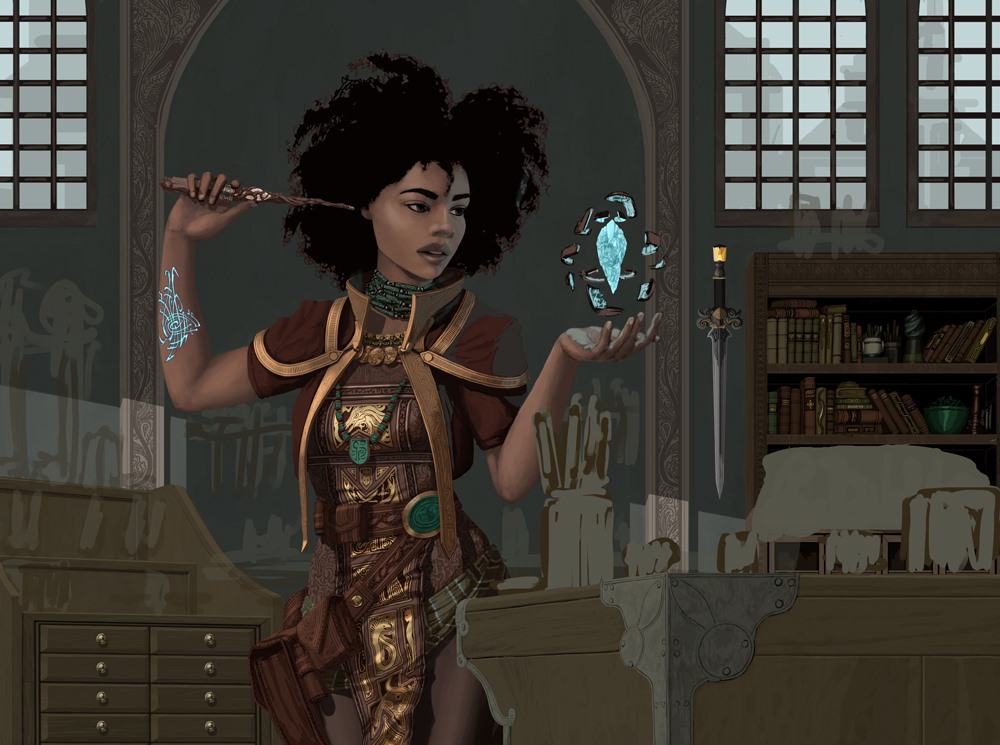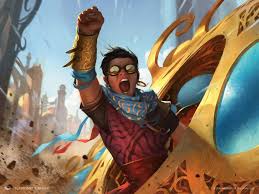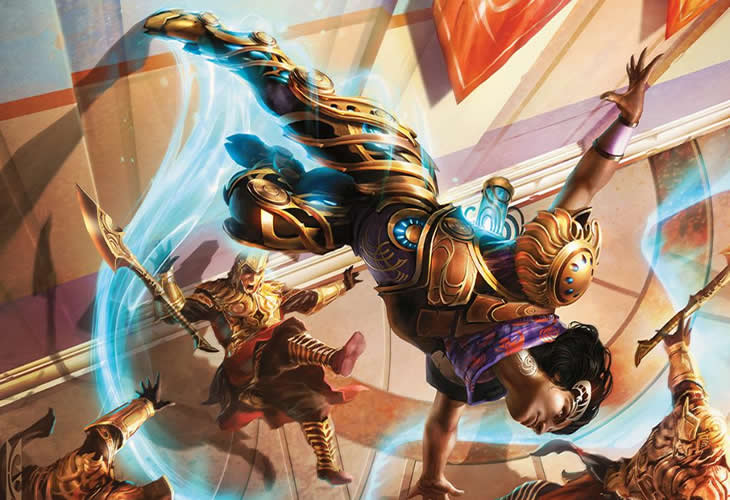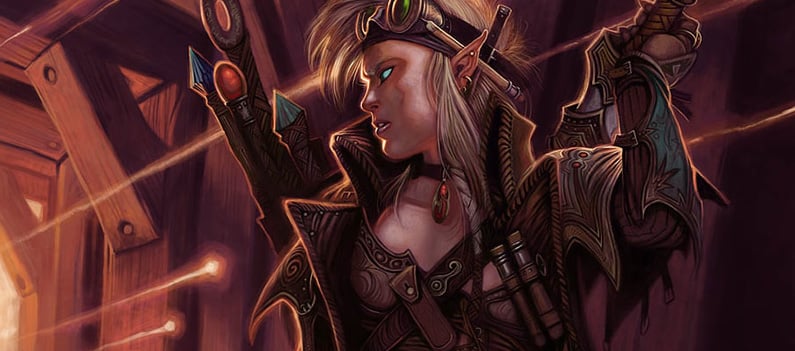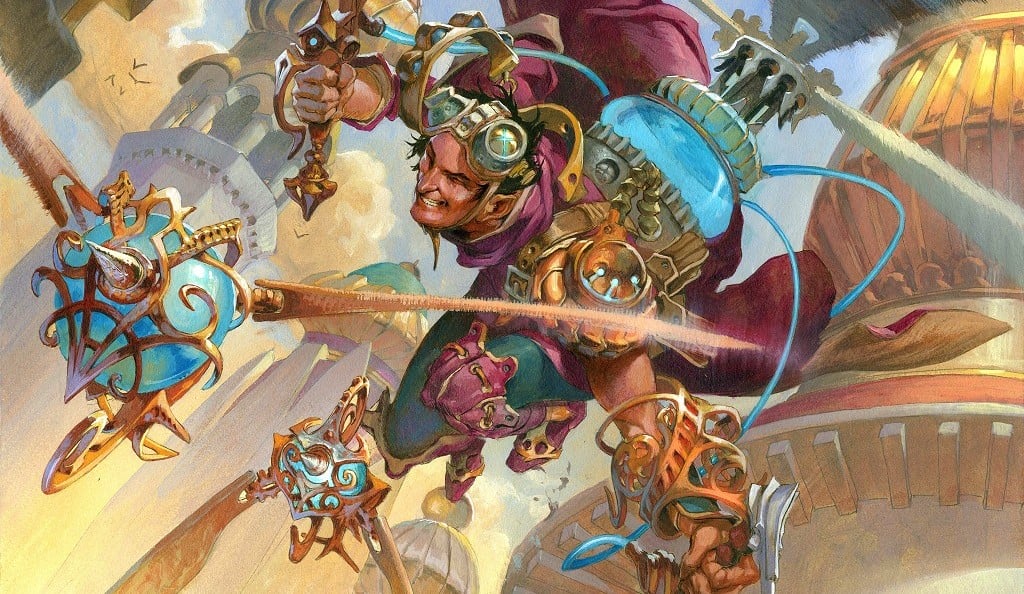D&D: So What Exactly Does An Artificer Do
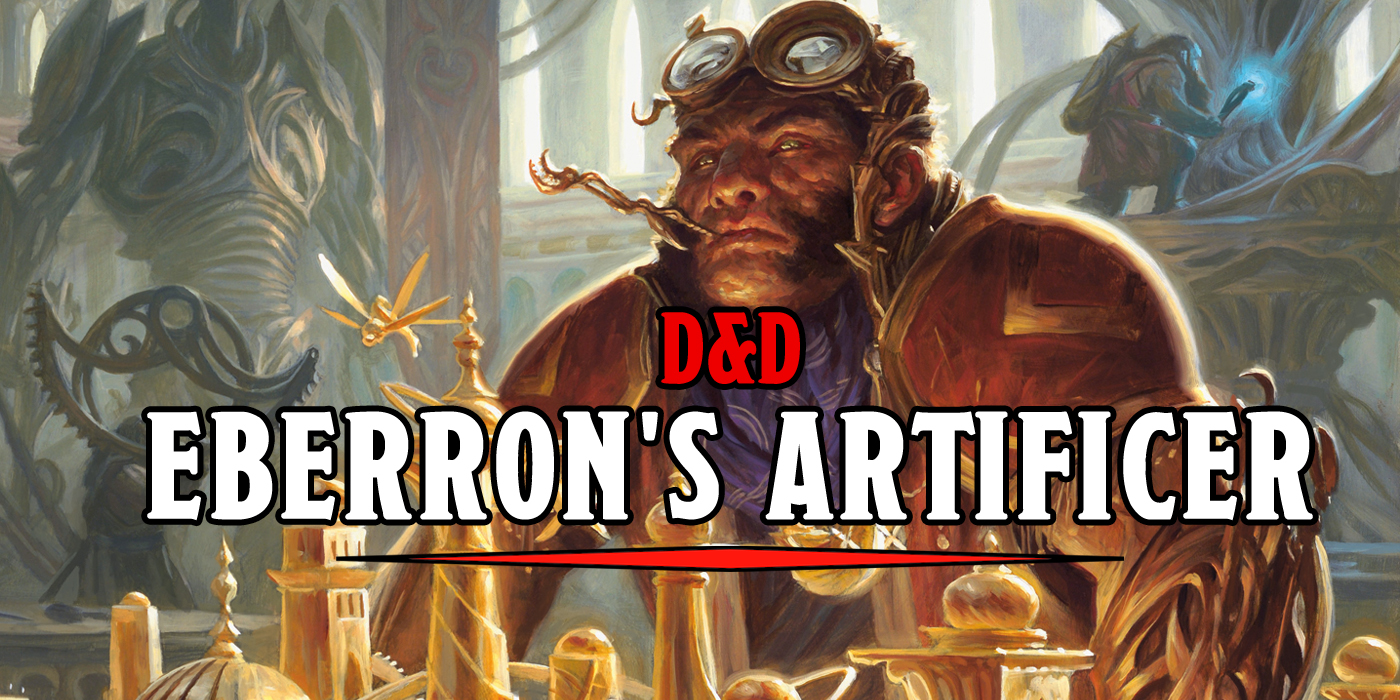
The Artificer is the hot new class introduced in Eberron: Rising from the Last War. How has this class changed? Is it as OP as some folks fear? Let’s chat.
It doesn’t seem like two years have passed since the Artificer first appeared in an Unearthed Arcana, around the time the Midway surveys were finishing up, and Xanathar’s Guide to Everything was getting ready to be announced. The class, which is now officially the first new class to be introduced to 5th Edition, beyond the core 12 in the PHB, has been through a lot of changes in the intervening years. When Artificers made their debut, it was a much different vision than the tinkers we have now. They were centered more on magic items, specifically, and creating alchemical solutions or a kind of weirdly dull gunslinger that didn’t do much exciting.
Earlier this year, we got a look at a heavily revised Artificer. This time it had four new specialties and seemed to be more focused on conjuring allied constructs and working as a proper spellcaster. But even then, it still had some serious refining to do. The earlier draft’s vision of an alchemist with a homunculus servant proved to be too weird for audiences to grasp as being an “alchemist” specific thing. So now the alchemical homunculus is technically available to all Artificers. A few other changes give us the class that rests in the pages of Eberron: Rising from the Last War. But what exactly does an Artificer do? Let’s talk about it.
Artificers cast sells, but they cast them through their tools. Artificers create small magical devices that might work briefly, or they have an assortment of various gadgets or improvised reagents that they can assemble. While they are functionally the same as a spellcaster–they use a slightly tweaked version of Paladin spellcasting progression–they accomplish this goal through magitech means. It’s an interesting thing for a class because it requires a little investment in the narrative of it from the players.
Some of the abilities read rather vaguely:
To use this ability, you must have tinker’s tools or other artisan’s tools in hand. You then touch a Tiny nonmagical object as an action and give it one of the following magical properties…
Read literally that could be holding a wrench in one hand and touching your TV with another to make it work. Or take this other example:
…with tinker’s tools in hand, you can magically create one set of artisan’s tools in an unoccupied space within 5 feet of you. This creation requires 1 hour of uninterrupted work, which can coincide with a short or long rest. Though the product of magic, the tools are nonmagical, and they vanish when you use this feature again.
Advertisement
This one’s a little more explicit that you’re working on the device. But even so, it still requires the player to engage with the fiction of the class a little more. You work with your tools to create specialized items, or you create channeling lenses to focus the right kind of energy, or you fill up your magical attenuator circuits with air-aligned essence to allow you to fly–whatever the description it’s how you make your mark on an Artificer.
And while, yes, every class has to engage a little, it’s a lot more straightforward to say, “I swing my axe.” Boring, but easier.
Anyway, Artificers are Spellcasters. But they’re also a bit like Warlocks. Each Artificer has the ability to infuse a mundane item with magical properties. This represents you creating temporary magitech items that you–or one of your allies–can use. You learn a set number of “infusions” starting at four and ramping up by two every four levels until you hit 12 infusions known at 18th level. Each of these infusions is a bit like using the Warlock Invocations. These are minor buffs that help customize your character. Every Artificer should feel distinct owing to the sheer variety of useful items they can create with infusions.
You might create something new like Boots of the Wining Path, which lets you teleport 15 feet as a bonus action to an unoccupied space you have previously occupied during the current turn, or you can replicate an existing magic item like a Rope of Climbing or Wand of Secrets. The magic items you can replicate an increase in power as you level up. And while most Artificers can only swap out Infusions known after they level up, I wouldn’t be surprised if some DMs or Players experiment with allowing them to swap out a single Infusion for one of the same “level” at the end of a Long Rest. I’m not sure if it’s the most balanced thing–but it does make it more likely that an Artificer might branch out.
After all, just as there are always a few auto-picks for Warlocks (namely Agonizing Blast for all Warlocks and the blade pact one that makes you fight more for Hexblades), there are definitely some strong choices that will probably dominate. After all, being able to create a +1 suit of armor or a +1 weapon (and +2 at levels 10+) is very strong. Fortunately, there’s a lot of variety to be had–and these items can be shared, so a little Artifice goes a long way.
And that one class feature kind of summarizes Artificers in a nutshell. They might not do the most damage, or they have the most defense or spells, but they are all about making the most of what they have. Artificers are supremely adaptable. They can share it not only with themselves, but with their groups. They make excellent supports–some of their higher level abilities allow them to use their reactions to boost an ally’s saving throw or ability check on the fly. At 11th level, they can store spells in an object that they or someone else can use several times equal to twice their Intelligence modifiers–in short, with an Artificer it’s possible for the entire party to have a trick up their sleeve.
We haven’t even touched on their subclasses yet, but already the class feels flexible and strong. The specialties give you three options: the Alchemist, the Artillerist, and the Battle Smith.
As before, Alchemists are all about providing healing and other alchemical effects. As mentioned, they lost their homunculus ability, making them the lone Artificer that doesn’t come with a summonable ally. Instead, they can create Experimental Elixirs, which grant you random effects when you or your ally drink something.
Alchemists focus more on casting, improving their ability with certain spells when dealing with healing or damage. You’ll even gain access to powerful healing spells as you cap out in the class.
Artillerists, on the other hand, are all about using a magitech gun to attack their foes. They have more combat-oriented spells like Shield or Thunderwave or Fireball. They summon an Eldritch Cannon that is a construct that either attacks enemies with a burning hands type spell, shoots one creature with a bolt of force, or deals temporary hit points to allies you choose, depending on what you choose.
As an Artillerist, you’ll be using your Eldritch Cannons and casting spells that deal damage to your enemies, that’s what they do best.
Battle Smiths on the final hand (hey you’re a thri-kreen it all makes sense), are all about crafting magical weapons and armor. These make excellent melee fighters. It might be a new contender for a popular gish type character–they gain access to smite spells and can attack with magic weapons using their intelligence modifier instead of strength or dex. As they level up, not only do they gain extra attack, they also learn to challenge magical energy through their spells that allow them to either deal extra force damage or heal a nearby target.
Battle Smiths call on a magic construct, a Steel Defender, to aid them in fights. This can deflect attacks or attack on its own.
All in all, the class will be exciting for folks looking for a new way to play. Are they more powerful than existing classes? It doesn’t feel like it. They aren’t as focused as some builds–though there might be a multiclass build here or there that really empowers them–but all in all, that’s what Artificers have to offer 5th Edition.
Happy Adventuring!

